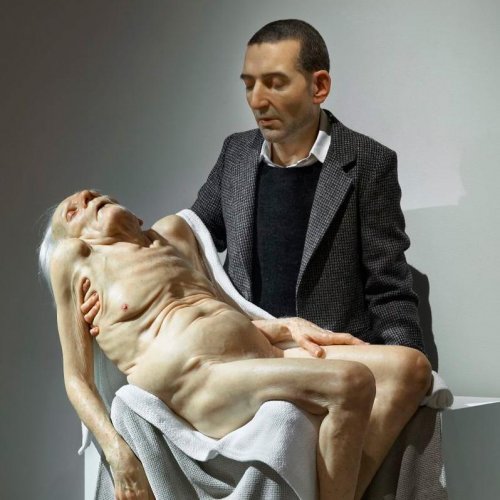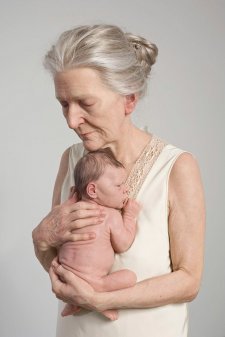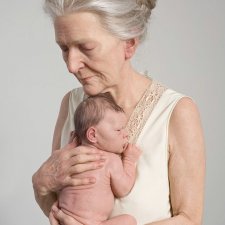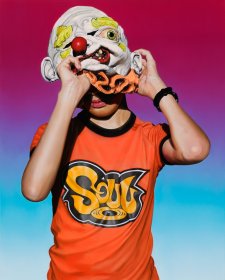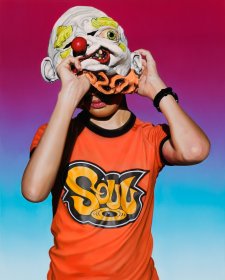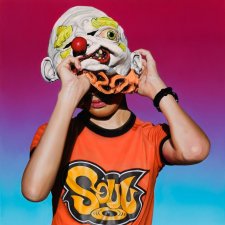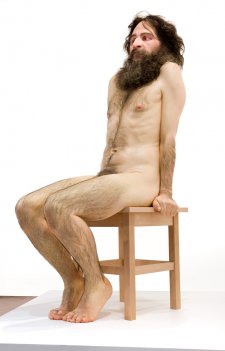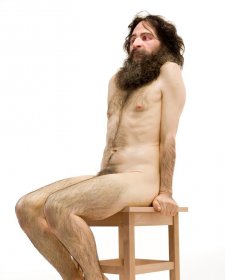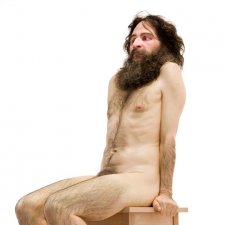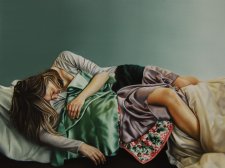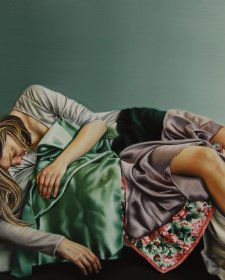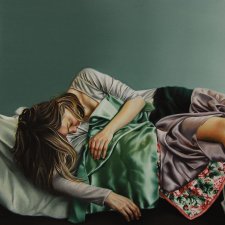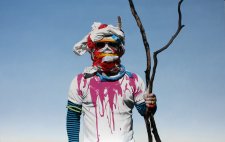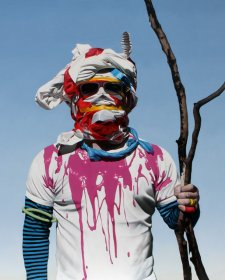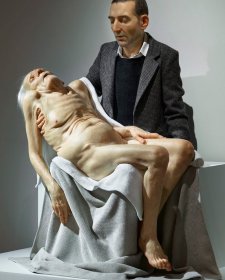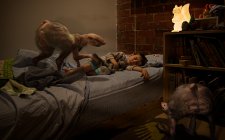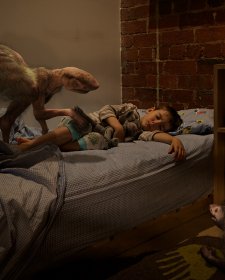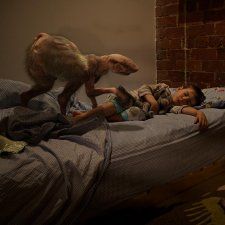In the flesh confronts humanness – the experience of having a human mind enfleshed in a human body. Considering humanness can be enlivening, unsettling, joyous and weird. The human mind sees into and beyond itself, reflects on time and strives to connect with other minds. This soaring mind, from birth, through life and approaching death, must come to terms with the reality of existing inside a fleshy, organic, animal body. This concept underpins portraiture and is explored in the work of Australian contemporary artists Jan Nelson, Natasha Bieniek, Patricia Piccinini, Juan Ford, Petrina Hicks, Ron Mueck, Yanni Floros, Sam Jinks, Michael Peck and Robin Eley. Mind and body both clash and are entangled. In these works, this is intensely realised through moments of intimacy, empathy, transitions in life and the transience of life, vulnerability, alienation, restlessness, self-reflection, mortality and acceptance.
Sound tour
Our In the flesh sound tour is a different way of experiencing the work – through intense, personal, funny, unexpected, moving stories that evoke the exhibition themes. We approached people with personal and professional backgrounds where thinking about what it means to be human would be part of their everyday life.
Sensation: The Sensory Space
Our in-gallery family-experience space embraces the instinctive, automatic and uncontrolled human mind. A giant pink tongue will lead you into an immersive, fleshy, organic space to feel and touch. Artists Patricia Piccinini and Sam Jinks have donated items in the blind-touch boxes where you can reach in and feel the bodily shapes.
Family tour
The fun family trail will assist children and their families to engage with In the Flesh. It contains questions that are designed to encourage open discussion and creative thinking. Family-friendly definitions of each theme are included in the trail. Families can take home this playful booklet and continue their exploration of what it means to be human.
